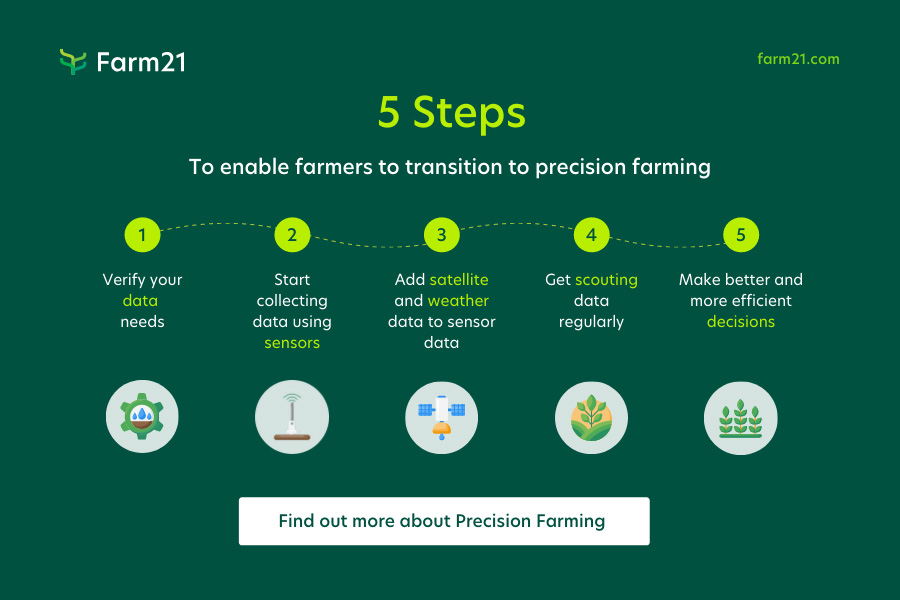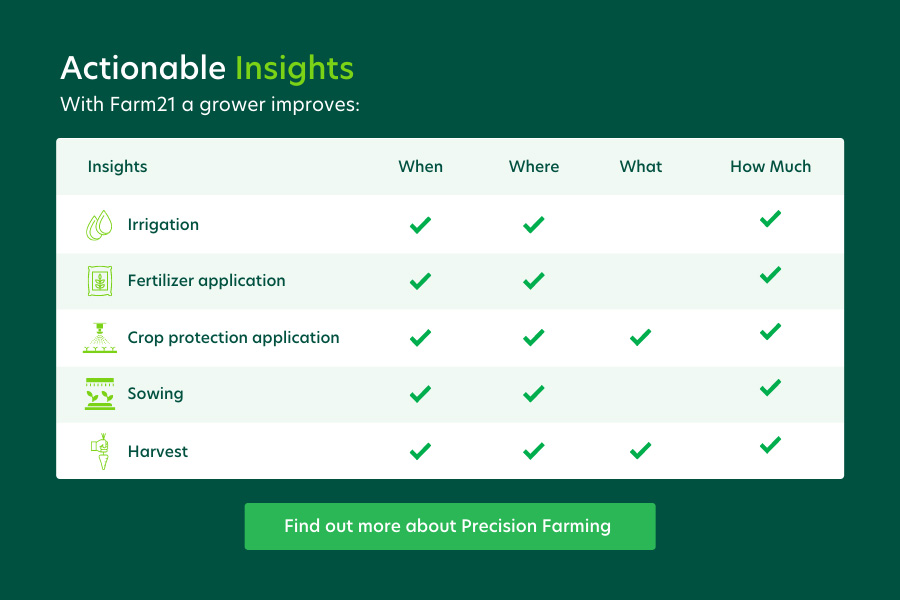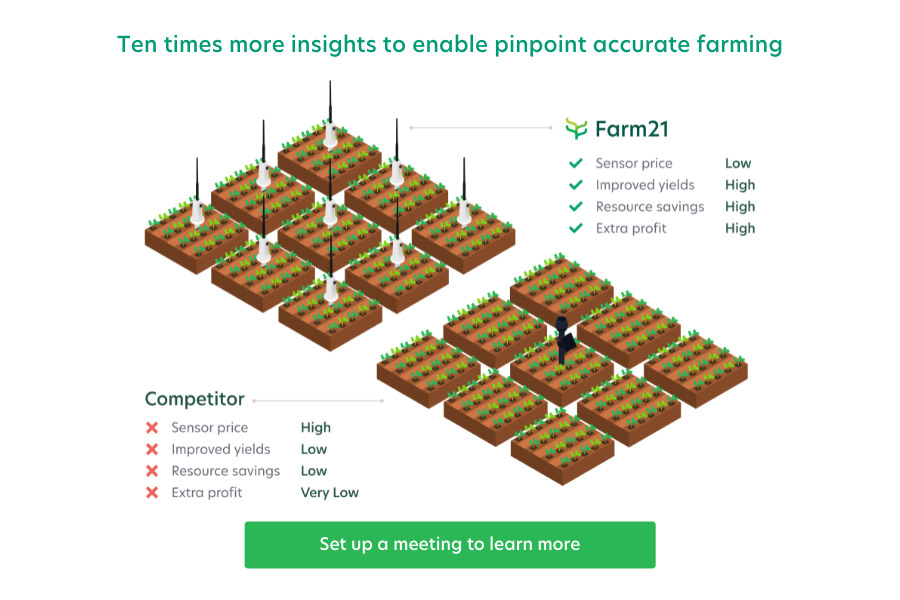Advertiser content
5 steps to help farmers transition to precision farming
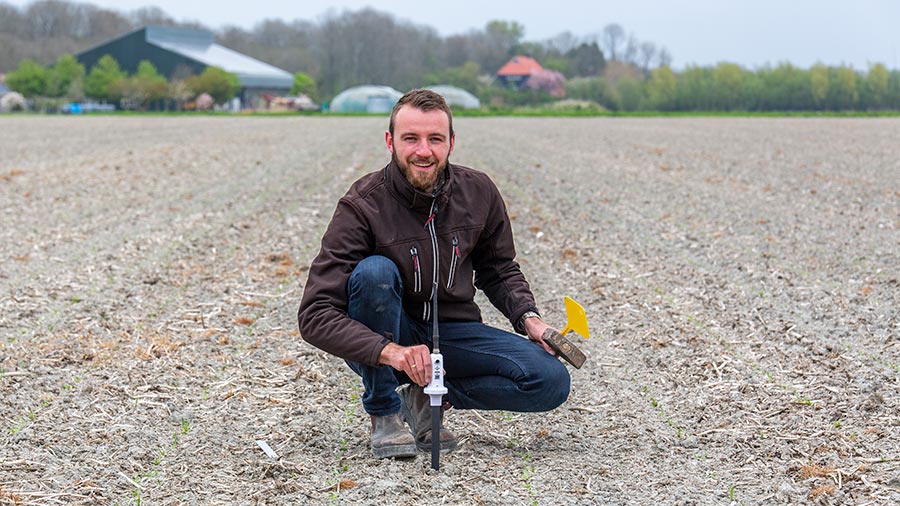 © Farm21
© Farm21 In this article, we will talk about the common problems farmers are facing these days. We will share with you a five step plan to solve those problems using precision farming sensors and a platform.
We also show you an example of two farmers, one who uses precision farming technology and how it helped him save time, money, and resources, and another farmer who did not and the consequences.
Problems all farmers face
Farmers across the world are struggling with the same problems. They are experiencing unprecedented, soaring costs of fertiliser and fuel, which impact profitability and create uncertainty.
Farmers love to walk the fields and experience the essence of their land, but there is just not enough time to be in all the fields simultaneously. Resources are stretched, and farmers do not have enough precision knowledge to make the right decisions.
Click here to learn more about precision farming or continue reading…
Using water sustainably is at the forefront of the farmers minds, but they do not always know when and how to irrigate. Changing and unpredictable weather conditions are ongoing concerns.
How do farmers manage their farms to deal with these unknowns, conserve moisture, reduce waste and protect the environment?
The agricultural sector in the UK has a long and proud legacy and has always been resilient and innovative. For several years the UK has been taking steps to become a world-renowned centre of agri-tech innovation.
Many young people and more women are eager to enter the agricultural industry.
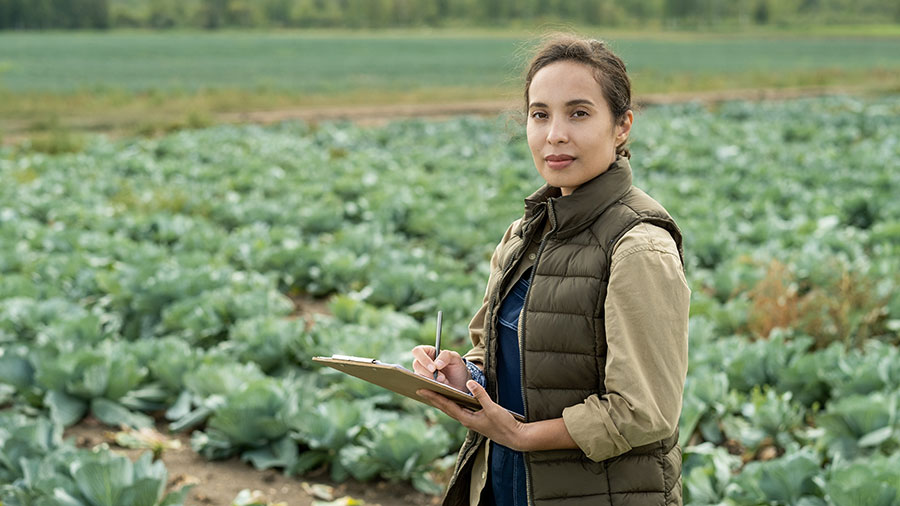
Today, the young generation and women are enthusiastic about entering the agricultural industry © Farm21
Farming is so much more than just food production. It is about sustainable food security and about the role of the farmer in protecting biodiversity and combining traditional knowledge with evolving technology. A diversity of skills are required.
The future of agriculture is exciting with many smart and easy-to-use tools to overcome common challenges.
Now is the time for every farmer to embrace technologies for the era of precision, optimal and sustainable farming. If you have access to appropriate data and accurate insights, it will help you grow crops smarter, increase yields and save money, resources, and time.
How can you work better with pinpoint accuracy and ten times more insights about your farm? How can you access more data about your crops than ever before? Read on!
Problems facing farmers across the world:
- Soaring costs
- Weather conditions
- Not enough resources
- Not enough time
- Not enough precision knowledge
Solution: Five steps to solve problems
Dealing with many new challenges, farmers must as always adapt and be resilient and innovative.
Precision farming goes hand in hand with smart farming solutions like drones, satellite imagery, and IoT devices like agricultural sensors. Satellites and drones monitor from above while sensors are installed in fields.
Farming sensors installed in fields are capable of recording climatic data and information on soil water requirements.
With data at hand, you can improve your decisions about irrigation, fertiliser application, crop protector application, and sowing and harvesting.
You can optimise and increase soil quality and productivity by putting in place a series of targeted key interventions.
So how do the Farm21 sensors and platform work?
Step 1: Understand what data you need
Different crops need different measurements. For soil moisture it varies, for instance, wineries need measurements up to 60 centimeters of depth, and if your crop is cereal, you need measurements at 10, 20, and 30 centimeters.
For fruit growers, you need to look at the most important layer to measure – between 10 and 40 centimeters. Your precision farming partner and crop advisor can provide you with guidance about the correct technology and data needed for your crop. Once you have an idea of what data you need, you can start selecting the data sources.
Click here to set up a meeting with a precision farming expert
Step 2: Collect the data using sensors
With Farm21 sensors, the data can provide precise insights about soil temperature, moisture at different depths, air temperature, and humidity and provide accurate GPS locations of problem areas.
The antenna provides hourly data via a wireless connection, and batteries are rechargeable but often last for a year. The FS21 sensor can measure soil temperature at two depths and soil moisture at three depths, and you can move it around as needed throughout the year.
To order Farm21’s newest sensor, click here
Step 3: Add satellite and weather data
You can add another layer of information: weather and satellite data. Weather data can provide you with wind speed and bearing, air temperature, precipitation and humidity, and other weather conditions.
Satellite data gives you a biomass (or growth curve) map and provides a chlorophyll index map and a sensor-calibrated water stress map.
Step 4: Add scouting report
Next, add scouting reports. Scouting data provides information on insect and disease risks, water risk, weed risk, and a growth index, which provides information on crop protection applications.
Step 5: Make decisions based on this data and plan your season better
The data flow you receive will provide you with valuable insights. Data from Farm21 sensors is combined with an easy-to-use platform that analyses the data and enables you to set up your own dashboard.
You can customise your dashboard to show you different insights on soil conditions, disease pressure, field climate, water stress, and more.
You can work together with crop advisors or with other colleagues – sharing data with other farms in your region or with sector organisations will create more value for all.
Data will help you to identify problem areas, and the flow of monitoring means that you can see if your interventions have been effective over time.
A network of field sensors will provide you with fine-grid data collection. In the end, the best solution is to have more sensors in your field so take a look at our affordable and easy-to-use FS21 sensor.
Case studies
The most important person in the adoption of precision agriculture is the farmer. Arguably, those that could benefit most from this agricultural revolution are small family-run farms.
Previously there was a misperception that precision farming is too costly and complicated, but technology has evolved rapidly, making it more affordable and easy to use.
We looked at two average farmers and compared their experiences.
Farmer one: Potato grower
Working without sensors and no data points, Farmer 1 struggled to decide how much water was needed for his potato crop.
Unpredictable weather meant that accurate soil moisture levels at critical depths were not detected.
With correct data, he could have made more informed decisions and picked up diseases early on. Over-irrigation meant that water went to waste, resulting in a lack of air in over-saturated soil and ultimately poorly formed tubers and rotting.
Not having precision data nearly cost him his entire yield.
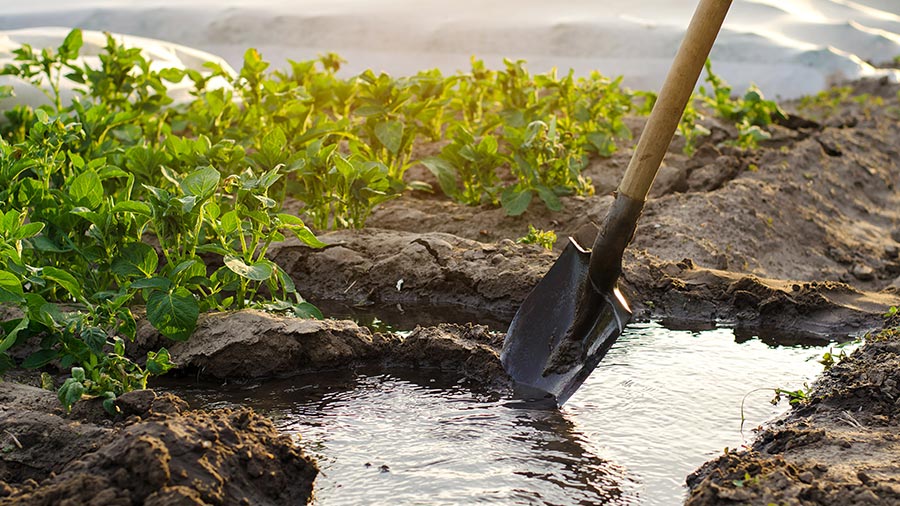
Overwatering your crops can lead to a lot of problems © Farm21
Farmer two: A fruit growing company
Farmer 2 wanted more knowledge about the humidity of the soil across various plots for his fruit orchards.
He never knew if he had given enough water, what was dry, what was too wet, and he wanted to pick up water stress in time.
He added several sensors so he could fine-tune his irrigation more precisely and measure exactly what is going on, especially in the most important soil layer at between 10 – 40cm depth.
It allowed him to determine when irrigation was sufficient and when it wasn’t required.
Sensors placed across several plots offered him more insight into weather, scouting data, soil temperature, and satellite images showing water stress.
The result was that he immediately noticed a difference in values, through the night, in different seasons.
He found that values differ between plots and locations – and that you cannot get precise values of humidity, air temperature, and precipitation with weather data alone.
Now he can check his data every moment of the day. He was able to save water, fertiliser, and other valuable resources, including his own time, and his yield significantly improved from the prior years.
Click here to set up a meeting with a precision farming expert
Next step: Decide your future
We would love to hear from you and tell you all you need to know about pinpoint accurate farming. Our sensors are plug-and-play, modular and low cost.
The affordability means that sensors can be deployed in large numbers to gather high-resolution and consistent data.
We combine this with an easy-to-use platform that provides hyperlocal insights combining sensor, scouting, soil, satellite, and weather data.
Farm21’s team is here to partner with you. We have an experienced team that combines hardware, software, and agri-knowledge.
Globally, we have sold more than 5000 sensors and our customers include industry giants like Bayer, HZPC, Farmfrites, McCain, Pepsico, and Syngenta.
We help farmers, crop advisors, and agricultural researchers to increase yields, save money and time and grow more sustainably.
Add ten times more data for the same investment.
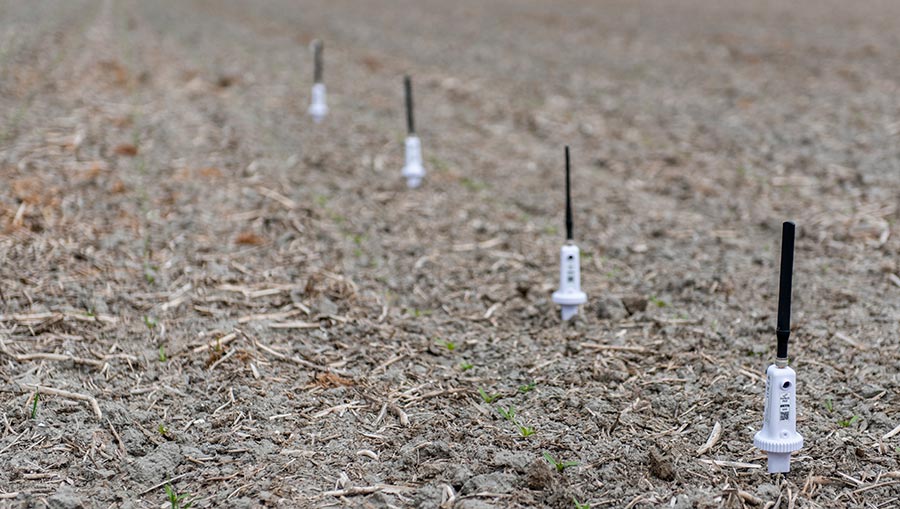
© Farm21
We are here to help. Contact us today at info@farm21.com or visit our website at www.farm21.com
Provided by
Farm21 gives you more data about your crops than ever before, providing pinpoint-accurate insights that combine data from our proprietary low-cost sensors, weather, scouting, and satellites.

